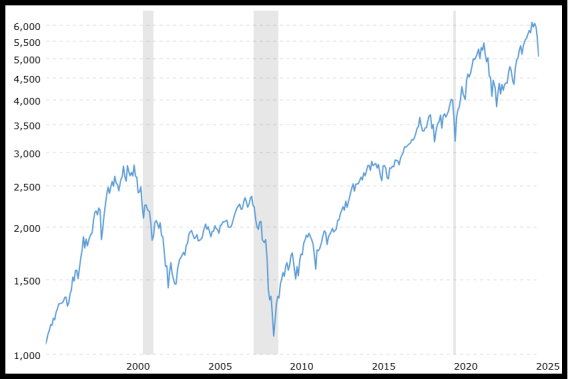Market Volatility Makes The Case for Long-Term Care Planning
Here’s a challenge for those of you in the advisory community…..What is the significance of the following dates?
Now, ask most Americans to identify the significance of those blips in (market) history – some of the most significant market corrections of the past 30 years – and most couldn’t tell you. Those corrections and the fear or terror they created at the moment were temporary. Those corrections have no impact on today’s consumer.
Ironically, though, many of those worried about current volatility have short memories. They panic that markets won’t recover and need the advisory community to remind them of a fundamental truth: Clients who stay the course always benefit. Even as you do, here’s the question few will ask: What happens when the market is down and an unexpected LTC event occurs?
Because when it does, there is no recovery—only reaction. Ask those same Americans (your clients) to recall a moment when their health, or the health of a loved one, drastically changed. That date is unforgettable.
The Real Risk Is Not Market Volatility
Advisors and clients alike often become anxious over temporary events that resolve themselves. While markets fall and markets recover, the real danger isn’t volatility itself but the fixation on it. Meanwhile, there are more significant risks growing quietly in the background, and one of those is the need for Long-Term Care. Where market corrections resolve themselves, the need for LTC usually won’t have a resolution, as it often becomes chronic/permanent, and ignoring the topic won’t make the risk go away.
Pragmatically, if the market is down when the need for care arrives, that’s when it’s time to become concerned…...
The Reality of Market Corrections vs. LTC Needs
The financial industry trains clients to believe that market movement is the greatest threat to their financial plans. But here’s the irony: They prepare for the temporary and ignore the inevitable. Long-Term Care risk doesn’t correct itself. It only grows more urgent with time. Financial Planning — and the Long-Term Care component — isn’t about timing the market. It’s about preparing for risks in life that won’t or can’t self-correct.
Why Insurance-Based LTC Planning Makes Sense
An insurance-based LTC plan isn’t tethered to market performance. It provides security and consistency that market-dependent strategies cannot.
Ignore Market Volatility: Insurance-based LTC solutions are insulated from market corrections. When care
is needed, benefits are available—regardless of market conditions.
Avoiding Forced Liquidations: Without insurance, clients may be forced to sell investments during downturns to cover
LTC expenses. Those sales trigger unnecessary taxes and deplete assets faster than intended.
Tax Efficiency: Insurance-based LTC Planning provides tax-free benefits, tax-deferred growth, and tax-deductible
contributions…… features and benefits that further underscore why self-funding future care needs is inadequate.
Leveraging Recurring Premiums: Just as Dollar Cost Averaging (DCA) builds wealth steadily, a recurring premium
structure for LTC insurance provides disciplined, predictable protection against significant risk. Regular contributions ensure coverage is in place, regardless of market
conditions.
The bottom line is that every American’s financial planning should include a Long-Term Care component, preferably one that’s not dependent
on market performance and is guaranteed to be there when it’s needed most. Perhaps the most important task is determining HOW you will reframe the conversation to encourage clients to
implement planning that will stand the test of time... and market corrections.
20250408

